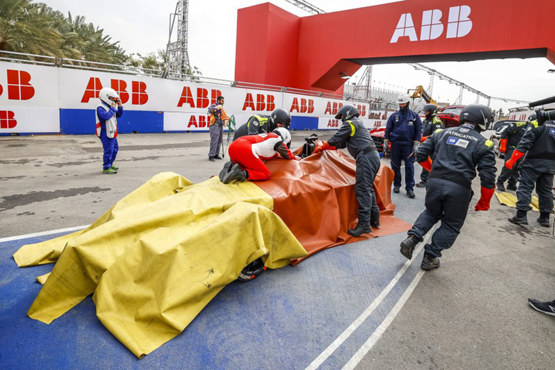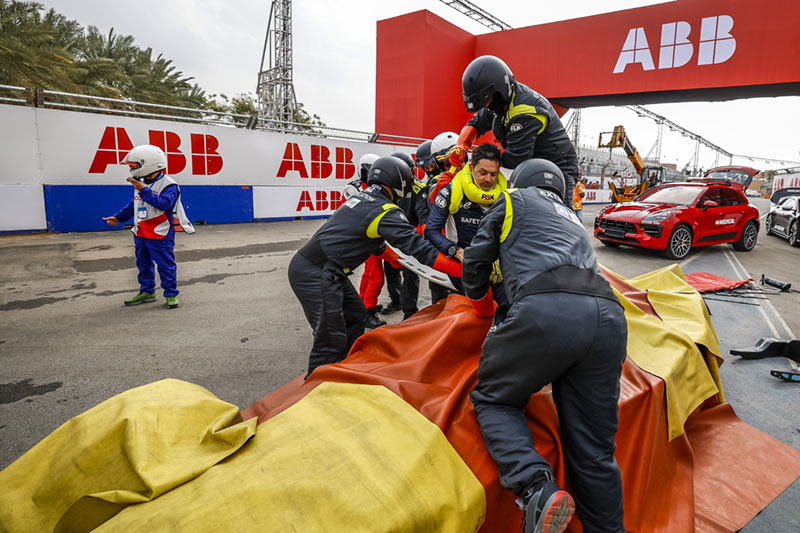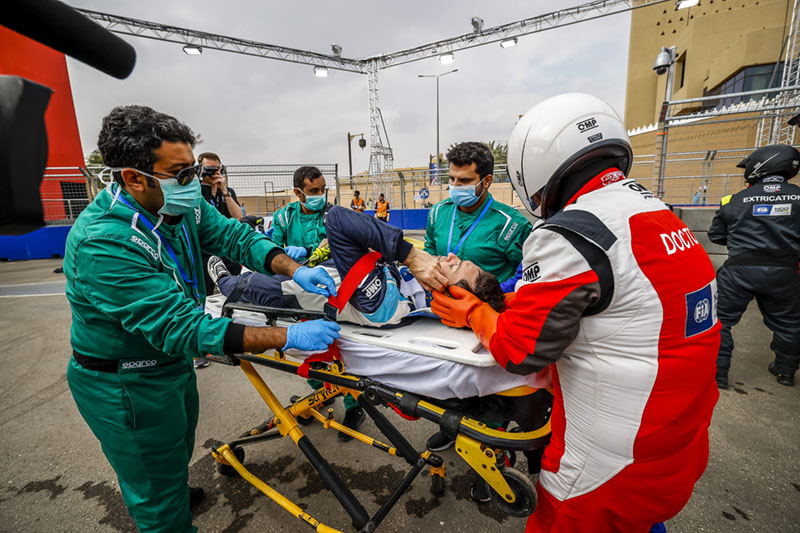Formula E safety training supported by FIA Foundation

Safety training for Formula E racing vehicles is protecting drivers, medics and rescue teams from electric hazards on the race track, supported by the FIA Foundation through ongoing research grants.
‘Red car’ extrication exercises have been a feature of the ABB FIA Formula E World Championship since its inception and are used to protect everyone from harm during the extrication of drivers from stricken electric cars and car recovery during races.

Red car simulations are conducted on-site in the immediate build-up to each race weekend, overseen by the championship’s FIA Medical Delegate, Bruno Franceschini, in partnership with the FIA E-Safety Delegate, Konrad Essen, and a permanent medical extrication team from MDD Motorsport Medical which travels to every E-Prix.
A ‘red car’ is essentially a car stopped on-track because either a collision or electrical issue, rendering it potentially unsafe – or ‘red’ like the safety lights located on the chassis in front of the halo. Due to the voltage running through electric vehicles, certain steps must be followed in order to carefully and safely extract the driver from the cockpit and recover the car.

During these training exercises, FIA Formula E safety car driver, Bruno Correia, plays the role of the driver needing to be extricated. Wearing special protective gloves, the medical extrication team covers the car with non-conductive tarpaulins before beginning the operation.
These regular simulations ensure the procedure remains fresh and clear in the mind of every member of the team, while taking into account any relevant particularities or updates to each circuit. Additional extrication exercises are carried out with two championship drivers at every event, to make sure they similarly are fully aware of what will happen and what they must do should they find themselves in such a situation. In both instances, the local medical and rescue teams are also involved in the ‘dress rehearsal’, enabling their members to practise and develop their own competencies, which may prove beneficial at future national and regional race meetings.
“Special care is always required when extracting a driver from a stranded race car, and that is even more the case when the car in question is electric, with the additional factors that need to be considered,” explains Bruno Franceschini. “We are proud of Formula E’s status as the standard-setter in this domain but can never rest on our laurels and must continuously train and re-train to ensure skills stay sharp.
“In the same way, these red car exercises enable us to educate and enhance the expertise of local medical and rescue personnel in the locations the championship visits, leaving behind a positive legacy for the overall benefit of our sport".
Saul Billingsley, Executive Director of the FIA Foundation, said: “The FIA Foundation is committed to supporting the FIA in its efforts to ensure that everyone involved in motor sport is safe. Formula E is the next iteration of motor racing and comes with new safety challenges which is why our motor sport research grant has been supporting the development and implementation of the red car simulations as part of the FIA’s ongoing safety innovation.”



